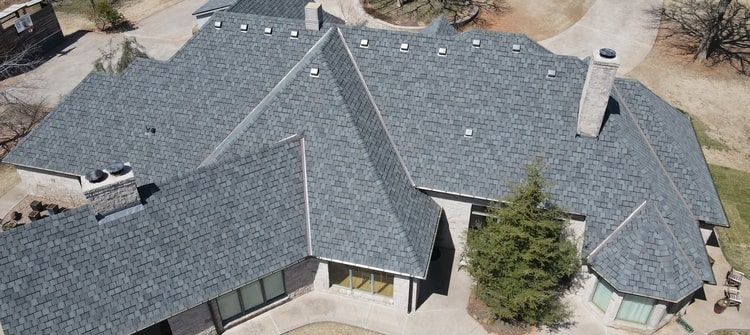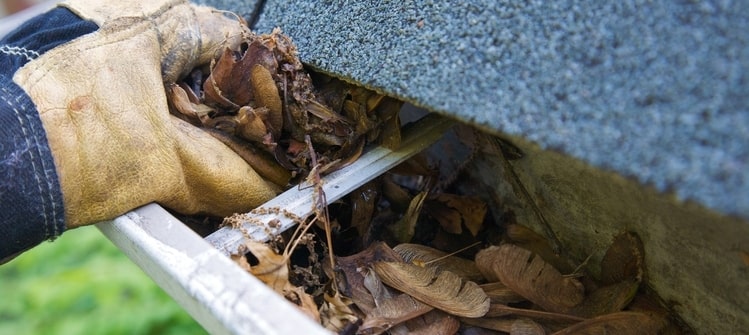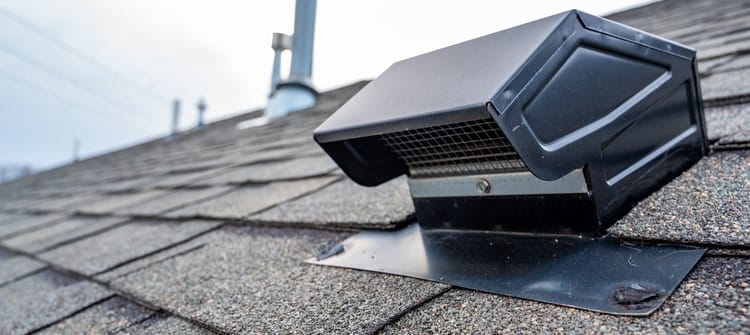Oklahoma Roof Maintenance Checklist
Knowing how to maintain your roof might be complicated for an Oklahoma homeowner.
With the proper degree of care and maintenance, you can ensure that your home’s roof lasts for as long as anticipated.
Regular roof care and inspections will help you avoid costly repairs for water leaks and other issues and early residential roof replacement.
This roof maintenance checklist will ensure your Oklahoma roof lasts as long as it should.
Roof Maintenance Safety
Before beginning any roof maintenance work, safety should always come first.
A few roof maintenance tasks must be done from an attic or a ladder. Hiring a roofer is the best method to ensure the job is done correctly without putting you or a family member at risk.
Oklahoma roofing professionals know roof dangers and can identify areas a DIYer could miss.
Limit Foot Traffic on a Roof
The majority of residential roofs in Oklahoma consist of asphalt shingles.
Small granules are applied to the surface of the asphalt shingles to prevent UV deterioration and add a three-dimensional color element.
Unfortunately, heavy foot traffic can scratch granules off. It’s also possible to trip over a shingle’s edge while walking on the roof, which could lead to the shingle lifting or cracking.
It is, therefore, best to restrict the number of roof walks.

Annual Oklahoma Roof Maintenance
The best time for Oklahoma homeowners to do roof maintenance is in the fall, immediately after the trees have shed their leaves.
Cooler temperatures make this an opportune time to complete gutter cleanouts and complete any minor labor issues that may arise.
After a thunderstorm, you can also use this helpful checklist to take a quick look to check for signs of Oklahoma hail damage on your roof from the safety of the ground.
1) Inspect Roof Shingles for Damage
Each Oklahoma season has its issues due to the typical weather patterns at that time.
In addition to excessive sun damage and potential thunderstorm damage, cold Oklahoma winters bring snowstorms and the possibility of leaks from ice and snow melting.

As a result, you must thoroughly inspect your roofing materials every season, including your shingles.
When inspecting your roof on your own, be sure to watch out for the following:
– Cracked shingles
– Curling shingles
– Missing granules
– Missing shingles
– Peeling flashing
Check the shingles for excessive wear or damage, noting any missing and requiring replacement. Examine your vent pipes and the caulk around the flashing for integrity.
Lichen or moss growth should be noted because they might conceal decaying materials under the shingles.
It would be best to immediately address any issues you discover to stop minor, fixable problems from becoming more prominent.
Suppose you are unsure of the proper steps or don’t have time to make the repairs. Any indications above of damage ought to be examined immediately, ideally by a qualified Oklahoma roofing contractor who can perform the required repairs without risk.
2) Remove Debris From Your Roof
In the summer, trees offer shade and beautify your landscape.
By clearing away roof debris, you can effectively guard your house against harm and even stop the development of moss, lichen, and algae.
Even after severe storms, your gutters won’t be able to catch all of the leaves and other debris that might fall onto your roof. As a result, it’s crucial to regularly inspect your roof for debris and remove it as soon as possible.
Unfortunately, there’s a never-ending source of debris in Oklahoma, from maple leaf helicopters in the spring to trees shedding their leaves in the fall.
Organic material can absorb water, keeping your shingles in prolonged contact with moisture. Additionally, rainwater may pick up debris as it cascades off your roof and ends up in your gutters.
Depending on the amount of tree activity in your area, clean up organic residue from your roof at least twice a year and possibly more. Depending on roof access, such as from an upstairs window, you might be able to remove the debris with a broom or leaf blower gently.
Always remember that using a tool that would rub the shingles’ surface could cause granules to become loose.
3) Maintain and Clean Your Gutters
Your gutters safeguard your roof by directing water and debris away from your roof and home foundation when they are in excellent condition.
If your home’s gutter system is dented or physically damaged, you may need a local gutter repair service to come out and take a look.

You must keep your gutters clear of leaves, sticks, and other debris so they can perform their function correctly. If there are no trees close to your home, you should clean your gutters at least twice a year to maintain proper water flow.
Cleaning your gutters every quarter will keep them functioning correctly, especially if you have trees on your property or live in a region like Oklahoma, where thunderstorms and high winds occur occasionally.
4) Limit the Growth of Moss, Lichen, and Algae
The growth of moss, lichen, and algae on your roof can result in significant damage and a generally unpleasant appearance. Fungus growth frequently happens in shady areas of your roof during the warmer months.

Algae can leave unsightly, dark streaks on the surface of a roof. An Oklahoma homeowner can reduce algae stains by using water and chlorine bleach. Your best option might be routine treatments if the environment on your roof is favorable to lichen, moss, or algae.
By having a professional roof cleaner clean your roof, you can easily remove these growths. Applying preventative products with zinc and copper will stop the moss, lichen, and algae from returning once your roof is clean and dry.
When applied annually, these products effectively prevent the growth of any substances on your shingles.
5) Remove Nearby Tree Branches
Trimming large trees close to your home, especially those that hang over the roof, can shield your roof’s shingles from accumulating debris and impact damage.
Tree limbs may snap or fly loose during Oklahoma severe storms and natural disasters like winds and tornadoes, possibly harming your roof.
Branches that hang over, are too close to your roof, or appear as though they might break in a storm should be trimmed back.
You should monitor the development of the tree branches surrounding your home once a year to determine when they require trimming.
6) Inspect and Replace Caulk Around Roof Flashings
In places where two roof planes intersect, flashing aids in ensuring a watertight seal.
For instance, you might discover flashing where your chimney or vent pipes emerge. Flashing is frequently installed in roof valleys, which are formed when two roof slopes meet.
Find a secure, comfortable vantage point to watch flashing, like a window on the second floor.
You might want to contact a local roofing contractor if the flashing is rusted, dented, missing fasteners, or the sealant is rotting away.
To determine whether a repair or replacement is required, they can perform a more thorough inspection of the flashing.
7) Inspect Your Homes Soil Stack
Rubberized gaskets are used to seal some vent pipes. The accompanying sealant or the gasket itself may dry out and disintegrate.
Ensure every roof penetration is adequately sealed off from the elements regularly.
Once more, contact a contractor to arrange for an official inspection if you see this from a safe distance.
The Impact of the Oklahoma Sun
Over time, Oklahoma sunlight can have a disastrous effect on the state of your roof.
UV rays relentlessly strike roofing materials in areas with excessive sunlight, heating them up and evaporating their protective oils.
But without enough sunlight, moss, algae, and lichen growth are much more likely.
Understanding how sunlight, or lack thereof, affects the state of your roof will help you and a roofing expert to reduce those effects.
Check Bathroom and Dryer Vents
The humid air produced by dryers and bathrooms must exit your house. Building codes require outdoor venting for new construction.

Make sure fans aren’t venting into attics or crawlspaces if you’ve bought an older house. An attic or crawlspace that receives warm, humid air can develop mold and mildew.
Check your dryer hoses or ducts from time to time to ensure they aren’t cracked, clogged, and fastened firmly.
Have a Certified Roofing Contractor Perform Your Roof Maintenance
A certified Oklahoma roof contractor will know if you should repair or replace your roof.
The best choice you can make as a homeowner regarding roof maintenance is to rely on a specialist with experience in residential roofing.
There are numerous benefits to hiring a professional for your home, but perhaps the most significant benefit is peace of mind.
Belter Roofing has helped Oklahoma residents since 2015 and is knowledgeable on what to look for, how to work with all varieties of roofing, and how to maintain meticulous ledgers of their work.
This gives you peace of mind that the experts will know what to do and what has been done to keep your roof lasting, regardless of the type of roof your Oklahoma home has.
Let's Have a Conversation
Table of Contents
- Introduction
- Roof maintenance safety
- Limit foot traffic on a roof
- Annual Oklahoma roof maintenance
- Inspect shingles for damage
- Remove debris from your roof
- Maintain and clean your gutters
- Limit the growth of moss, lichen, and algae
- Remove nearby tree branches
- Inspect and replace caulk around flashings
- Inspect your homes soil stack
- The sun’s impact on your roof
- Check bathroom & dryer vents
- Rely on a professional roofer
Share this Article


